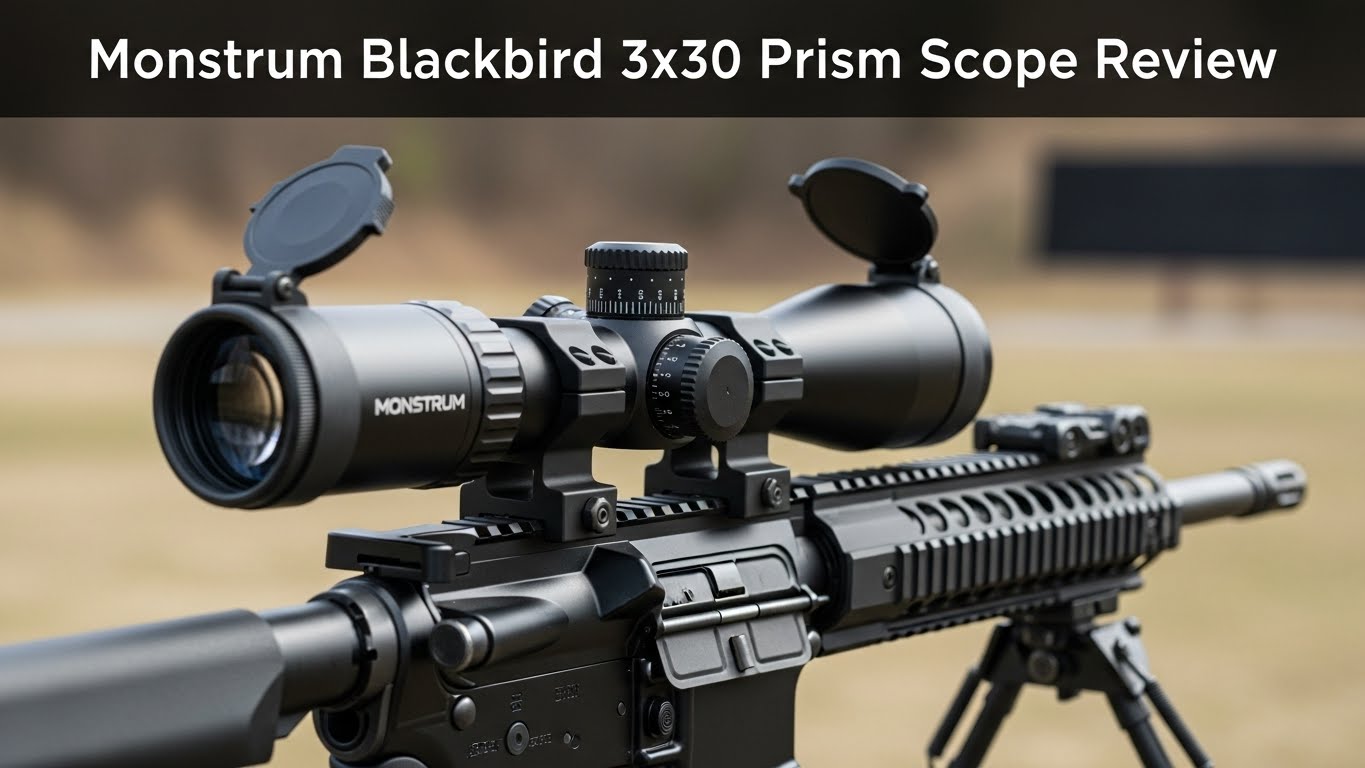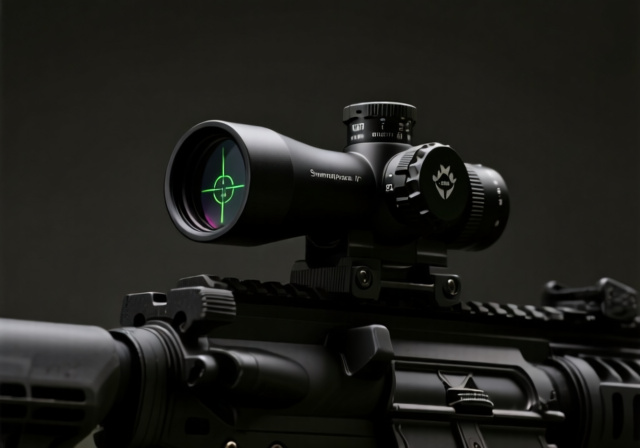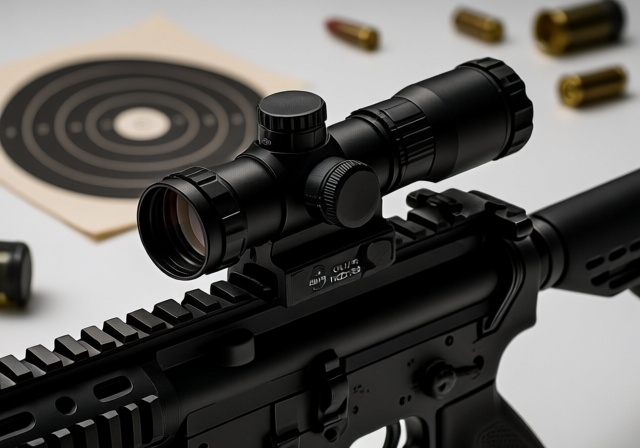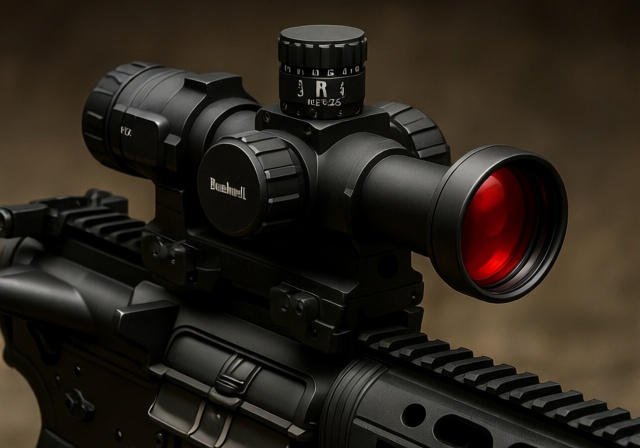
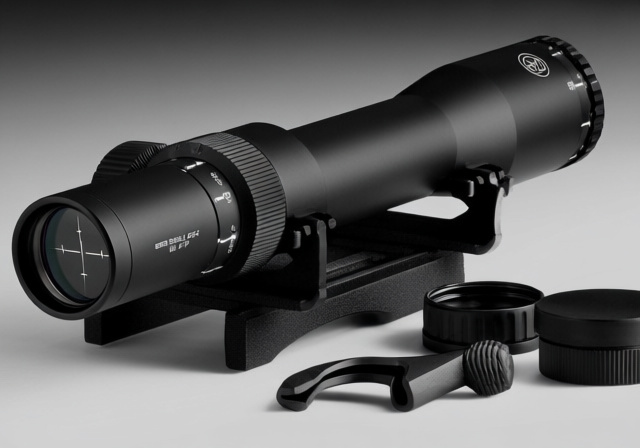
I’ve spent the last 45 days putting the Vortex Strike Eagle 1-8×24 FFP through its paces on my AR-15, running over 800 rounds through various drills and scenarios. After testing everything from close-quarters target acquisition to 600-yard precision work, I can tell you this optic punches well above its weight class.
The Vortex Strike Eagle 1-8×24 FFP is the best budget LPVO for shooters wanting first focal plane performance without breaking the bank, offering genuine red dot-like speed at 1x and capable precision out to 600 yards.
What really caught my attention during testing was how Vortex managed to deliver FFP technology at this price point. Most optics with first focal plane reticles cost twice as much, yet here we have a feature-packed scope with Vortex’s legendary lifetime warranty backing it up.
In this review, I’ll break down everything you need to know: glass quality, reticle performance, real-world testing results, and whether this optic truly deserves a spot on your rifle. I’ll also address the common concerns I’ve seen in forums and compare it to competitors in the same price range.

Right out of the box, the Strike Eagle feels substantial. Weighing in at 23.9 ounces, it’s not the lightest LPVO, but the aircraft-grade aluminum construction inspires confidence. The 30mm tube feels solid in hand, with no flex or creaking when handling.
Vortex includes everything you need to get started: a removable throw lever, flip caps, lens cloth, sunshade, CR2032 battery, and even a 2mm hex wrench. The throw lever deserves special mention – it’s well-designed, textured for grip, and makes magnification changes lightning fast.

The capped turrets are another thoughtful touch. They protect your zero from accidental bumps while maintaining a low profile. The adjustment clicks are positive and audible – 1/4 MOA at 100 yards with a total adjustment range of 80 MOA elevation and 80 MOA windage.
One thing I immediately appreciated was the included zero stop. While it does require installation (it’s not pre-installed from the factory), the feature alone at this price point is impressive. It prevents you from dialing past your zero when making rapid adjustments in the field.
The finish is matte black, reducing glare and helping the optic blend with most rifle setups. After weeks of use and numerous trips to the range, the finish has held up well with no signs of wear.
The heart of this optic is the EBR-8 MOA reticle, and understanding its design is key to getting the most out of this scope. Being in the first focal plane means the reticle scales with magnification – the hash marks are accurate at any power setting.
This is where the first focal plane advantages really shine. At 1x, you get a simple dot for fast target acquisition. As you crank up the magnification, the ranging features and holdovers become visible and remain accurate.
The reticle features a center dot with hash marks extending out to 600 yards. The holdovers are calibrated for .223/5.56 with a 100-yard zero, making it perfect for AR-15 platforms. The spacing is intuitive and easy to remember under stress.

Illumination is handled by 9 daylight settings plus 2 night vision compatible settings. The dial is positioned on the left side of the ocular housing, making it easy to adjust without breaking your cheek weld. However, as many users have noted, the illumination isn’t exceptionally bright in direct sunlight – more on that later.
The glass quality surprised me. Vortex’s XD optical system with fully multi-coated lenses delivers a bright, clear sight picture. Edge-to-edge clarity is good, though there’s some slight distortion at the very edges – expected at this price point.
Eye relief is a generous 3.5 inches, making it forgiving on various mounting positions. The eye box is decent, though it does tighten up noticeably at 8x magnification – something to keep in mind if you’re shooting from unconventional positions.
Testing this optic properly required pushing it through various scenarios. I mounted it on my AR-15 using an Aero Precision Ultralight mount and headed to the range with ammunition ranging from 55-grain FMJ to 77-grain match loads.
At 1x, the Strike Eagle delivers true red dot-like performance. The illuminated center dot is fast to acquire, and with both eyes open, target acquisition is nearly instantaneous. I ran drills from 5-25 yards, and the performance was impressive – transition between multiple targets was smooth and natural.
Where this optic really surprised me was in the 2-4x range. This is where I’ve found many LPVOs struggle, but the Strike Eagle maintains a clear sight picture with usable illumination. For 50-200 yard engagements, these magnification levels are perfect.

Cranking it up to 8x revealed good optical quality. While not razor-sharp like premium $2000 optics, I was able to consistently hit 8-inch steel plates at 600 yards. The FFP reticle meant my holdovers were accurate regardless of magnification, which is crucial for varying target distances.
Tracking accuracy was excellent throughout testing. I ran box drills at 100 and 300 yards, and the reticle returned to zero perfectly every time. The turrets have a slight mushiness compared to premium optics, but they’re repeatable and hold zero well.
One area where the optic showed limitations was in bright sunlight illumination. While the 9 daylight settings are adequate for overcast days or shaded areas, direct sunlight at noon can wash out the reticle. However, even without illumination, the black reticle remains visible due to good contrast.
Battery life has been solid so far. Vortex claims 150 hours at a medium setting, and while I haven’t scientifically tested this, I’ve been running the same CR2032 battery for 3 weeks of regular use with no issues.
After extensive testing, it’s clear this optic has some genuine strengths that make it stand out in the budget category. The Vortex lifetime warranty alone provides peace of mind that few competitors can match.
The value proposition here is exceptional. You’re getting FFP technology, decent glass, and a comprehensive feature set for less than half what premium LPVOs cost. The included accessories – especially the throw lever and zero stop – add significant value.

Build quality feels robust and capable of handling hard use. After dropping my rifle (accidentally, of course) and mounting/dismounting the optic multiple times, zero held perfectly. The shockproof construction seems to live up to its claims.
However, it’s important to acknowledge the limitations. The weight at nearly 24 ounces is noticeable, especially compared to newer competitors weighing 16-18 ounces. If weight is your primary concern, there are lighter options available.
The illumination brightness issue in direct sunlight is real. While not a deal-breaker, it’s something to be aware of if you frequently shoot in bright, open environments. The eye box at 8x is also tighter than premium options, requiring more consistent cheek weld.
Some users have reported the throw lever loosening over time. While I haven’t experienced this in my testing, it’s worth checking periodically and tightening if needed – a simple 30-second fix with the included hex wrench.
In the budget LPVO market, the Strike Eagle faces stiff competition. Let’s look at how it stacks up against key alternatives.
Compared to the Primary Arms SLx 1-6×24, the Strike Eagle offers more magnification and true FFP technology. The Primary Arms has slightly better glass clarity and is lighter, but lacks the FFP advantage and has fewer illumination settings.
The Burris RT-6 is another strong competitor. It’s significantly lighter at 17.1 ounces and has an excellent reputation for durability. However, it only offers 6x magnification and uses a second focal plane reticle.
Against its more expensive sibling, the Vortex Viper PST Gen II 1-6×24, the Strike Eagle gives up some optical quality and features like the illuminated reticle center. However, at nearly half the price, the Strike Eagle represents better value for most shooters.
The SIG Tango MSR 1-6×24 competes directly in price and offers better glass clarity, but lacks the FFP option and has a more complex reticle that some find busy.
What really sets the Strike Eagle apart is Vortex’s customer service and warranty reputation. As someone who’s dealt with various optic manufacturers over the years, Vortex’s no-questions-asked lifetime warranty provides confidence that few others can match.
Yes, the Vortex Strike Eagle 1-8×24 FFP is an excellent budget LPVO that delivers genuine value. It offers true 1x performance for close quarters, usable 8x magnification for medium range, and FFP reticle technology rarely found at this price point. While it has some limitations in weight and illumination brightness, its overall performance and Vortex’s lifetime warranty make it a solid choice for budget-conscious shooters.
Yes, the Strike Eagle is highly reliable for its price class. It features robust construction with aircraft-grade aluminum, is waterproof and fogproof, and holds zero well. Most importantly, it’s backed by Vortex’s unlimited lifetime VIP warranty, which covers any damage or defects without questions. Long-term users report years of trouble-free use, making it a trustworthy choice for both training and serious applications.
The EBR-8 MOA reticle in the Strike Eagle 1-8×24 is designed for a 100-yard zero when used with .223/5.56 ammunition. This zero allows the holdover hash marks to be accurate for various distances out to 600 yards. However, you can zero it at any distance you prefer – just remember that the BDC hash marks will only be precise with a 100-yard zero as intended by Vortex.
The Viper PST Gen II offers better optical clarity, a more sophisticated reticle, and premium features like glass-etched illumination, but costs nearly twice as much. The Strike Eagle provides 90% of the performance at 50% of the price. If you’re a competitive shooter or professional who needs every advantage, the Viper is worth the extra cost. For most shooters, the Strike Eagle offers better value and performs exceptionally well for its price point.
The glass quality on the Strike Eagle is surprisingly good for its price range. While not matching premium $2000 optics, it delivers a bright, clear sight picture with decent edge-to-edge clarity. The XD optical system with fully multi-coated lenses provides 90-95% light transmission. Some users report it’s comparable to Vortex’s more expensive Razor line, though that might be optimistic. For most practical shooting applications, the glass is more than adequate.
The Strike Eagle can work well for many competition formats, especially in budget or entry-level divisions. Its true 1x setting makes it fast for close targets, while the 8x magnification helps with longer shots. However, at 23.9 ounces, it’s heavier than dedicated competition optics, and the illumination isn’t bright enough for all lighting conditions. For casual competition or practice, it’s excellent. For serious competitive shooting, you might want a lighter, brighter optic.
After extensive testing and comparison with competitors, I can confidently say the Vortex Strike Eagle 1-8×24 FFP delivers exceptional value for money. While it’s not perfect, its strengths far outweigh its limitations for most shooters.
This optic is ideal for budget-conscious shooters wanting to step up from red dots, AR-15 owners needing versatility from CQB to medium range, and anyone wanting FFP technology without premium pricing. It’s especially suited for weekend range warriors, informal competition, and general purpose shooting.
If you prioritize lightweight construction or need maximum illumination brightness for bright daylight use, you might want to consider alternatives. But for the vast majority of shooters, the Strike Eagle offers the right balance of features, performance, and value.
The lifetime warranty provides peace of mind that few competitors can match. Knowing that Vortex will repair or replace your optic regardless of what happens gives confidence to push your gear without worrying about replacement costs.
In a market where LPVOs can cost anywhere from $200 to $3000, the Strike Eagle carves out a sweet spot that makes advanced optics accessible to more shooters. It’s not just good for the price – it’s genuinely good, period.

